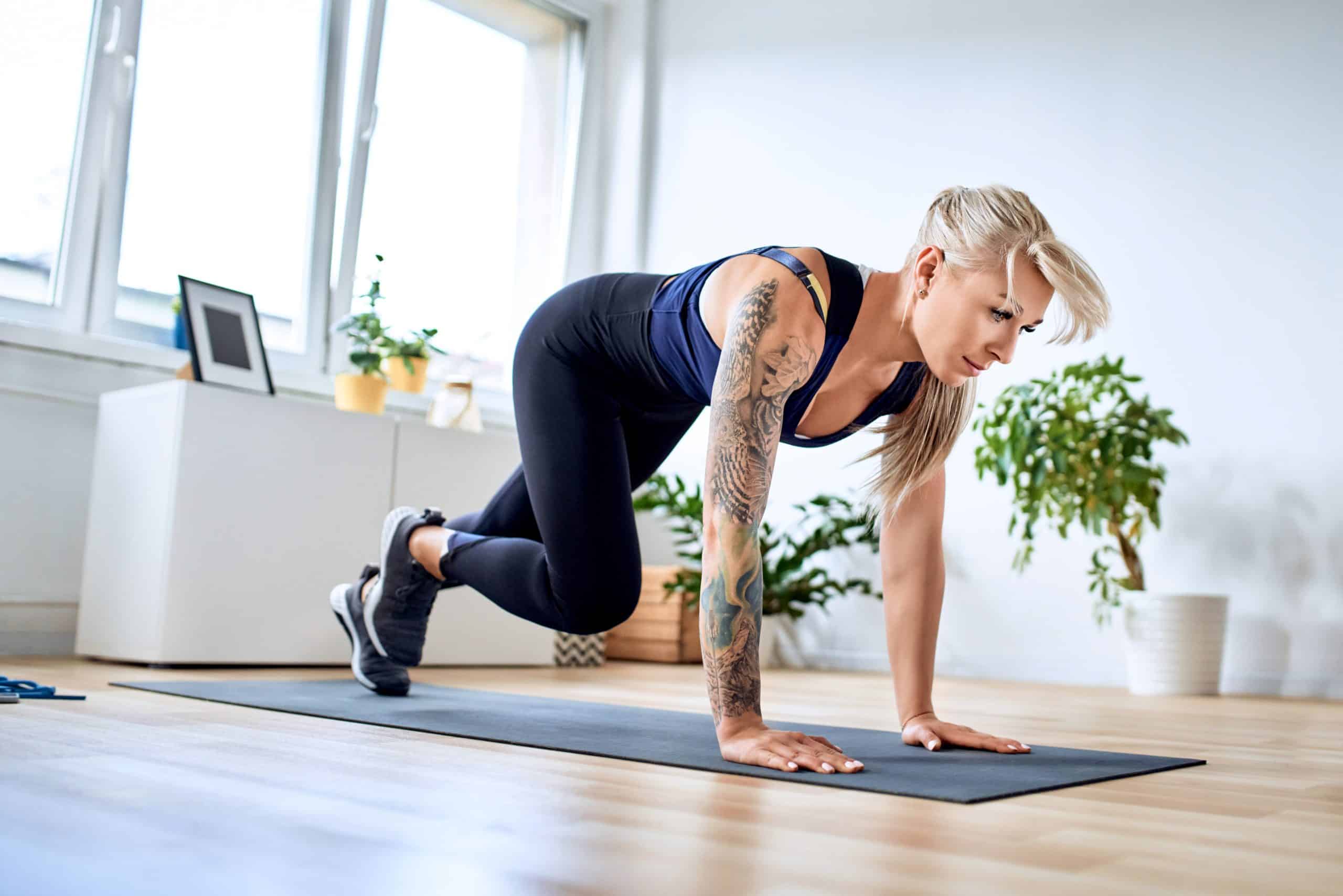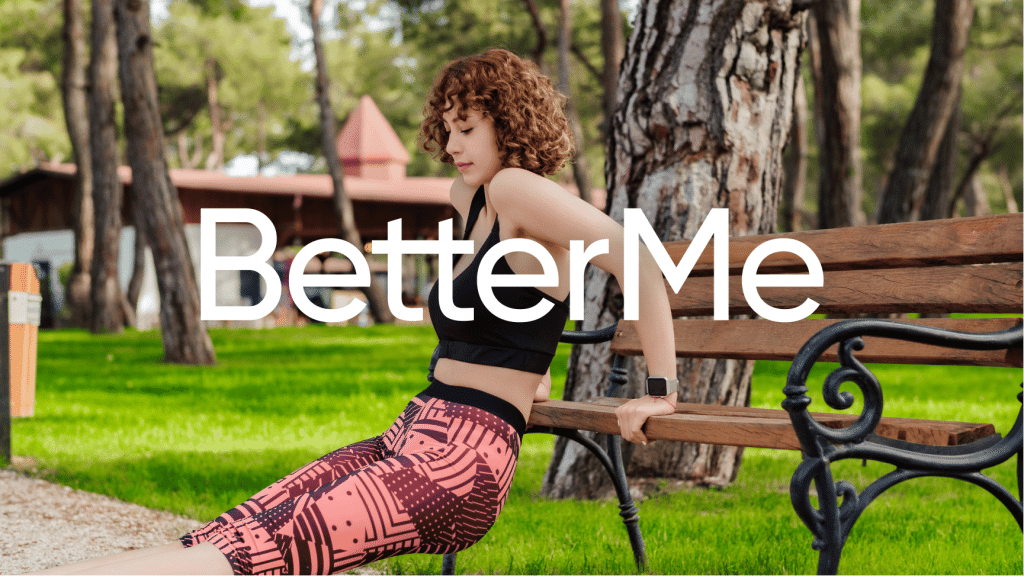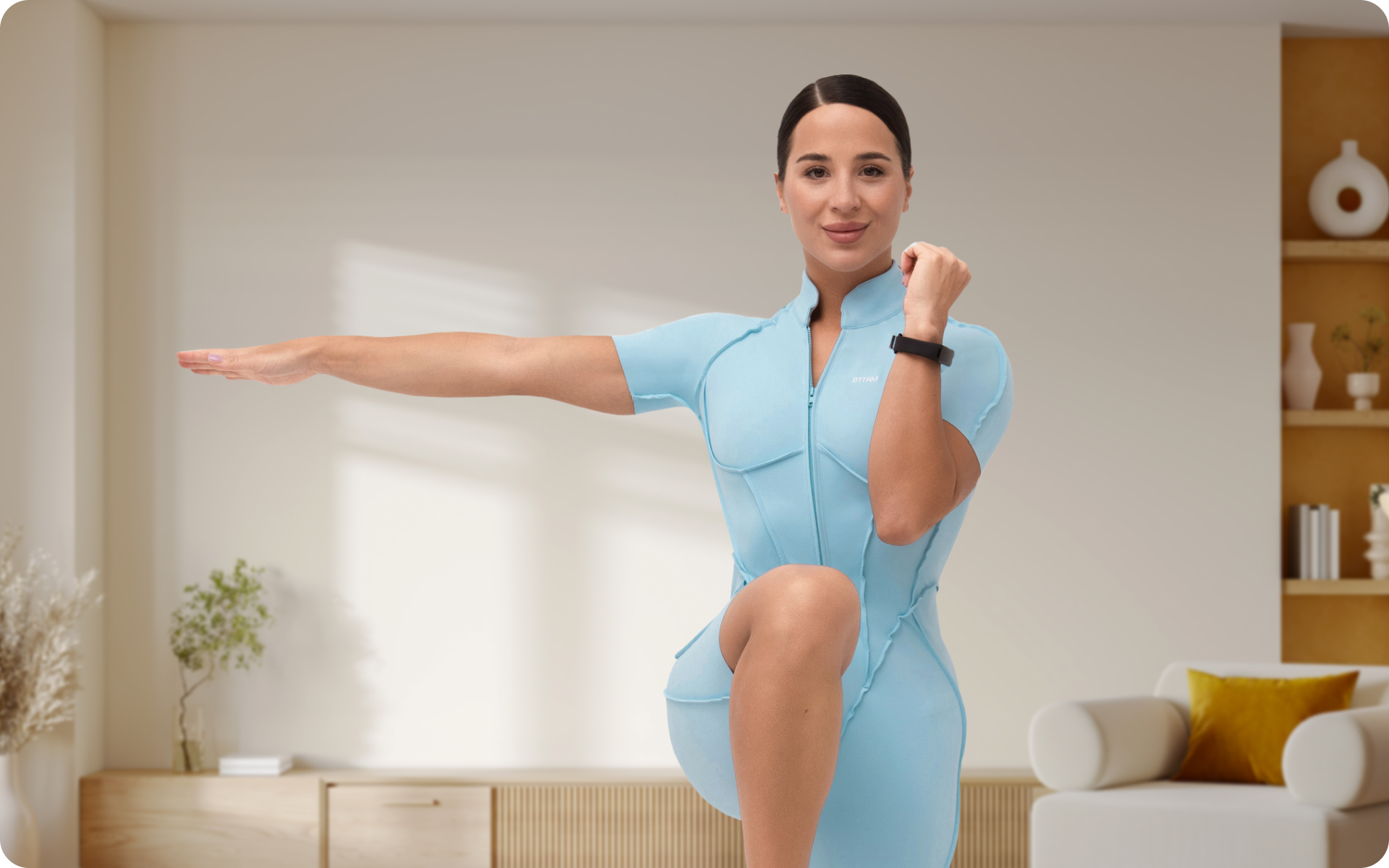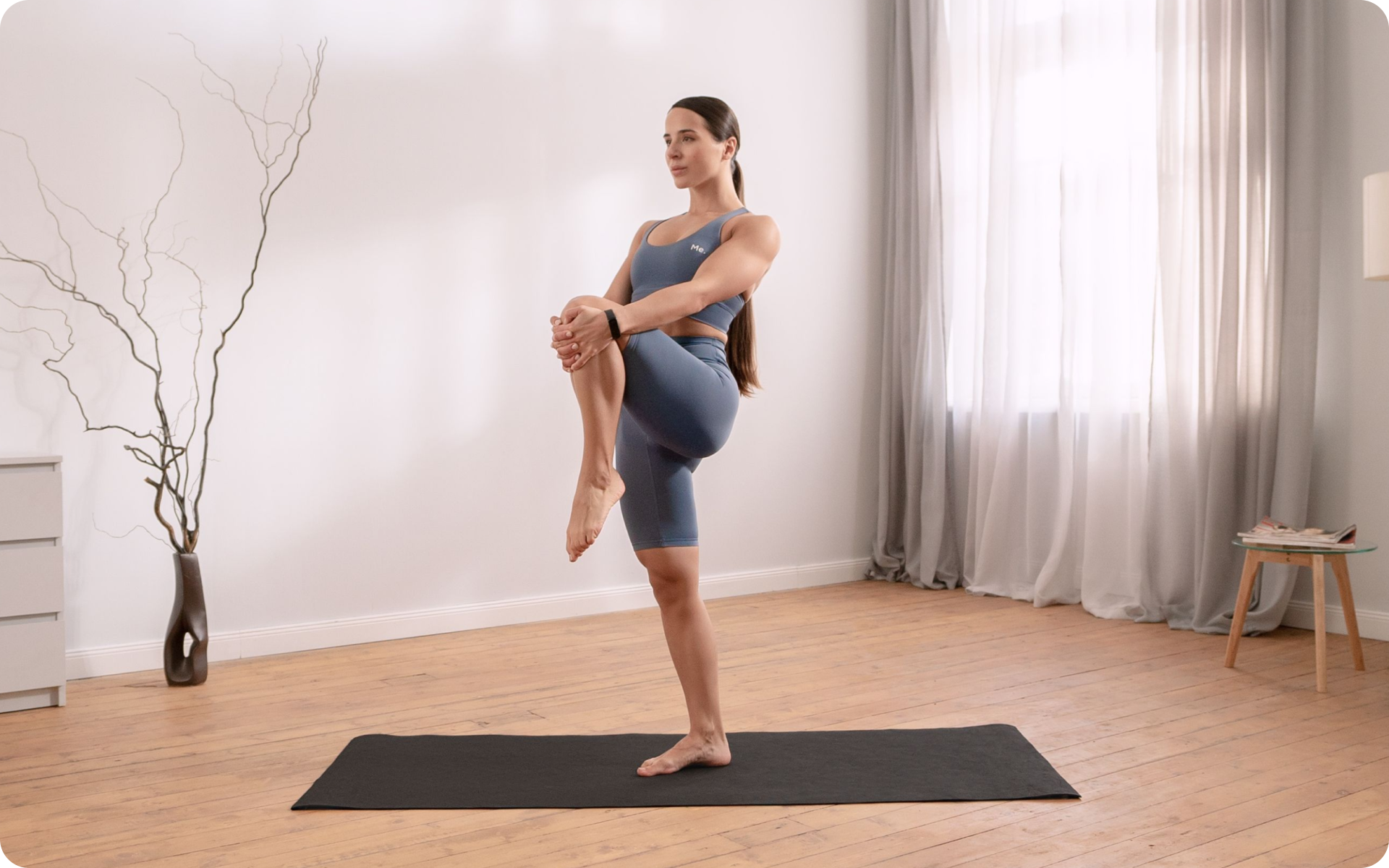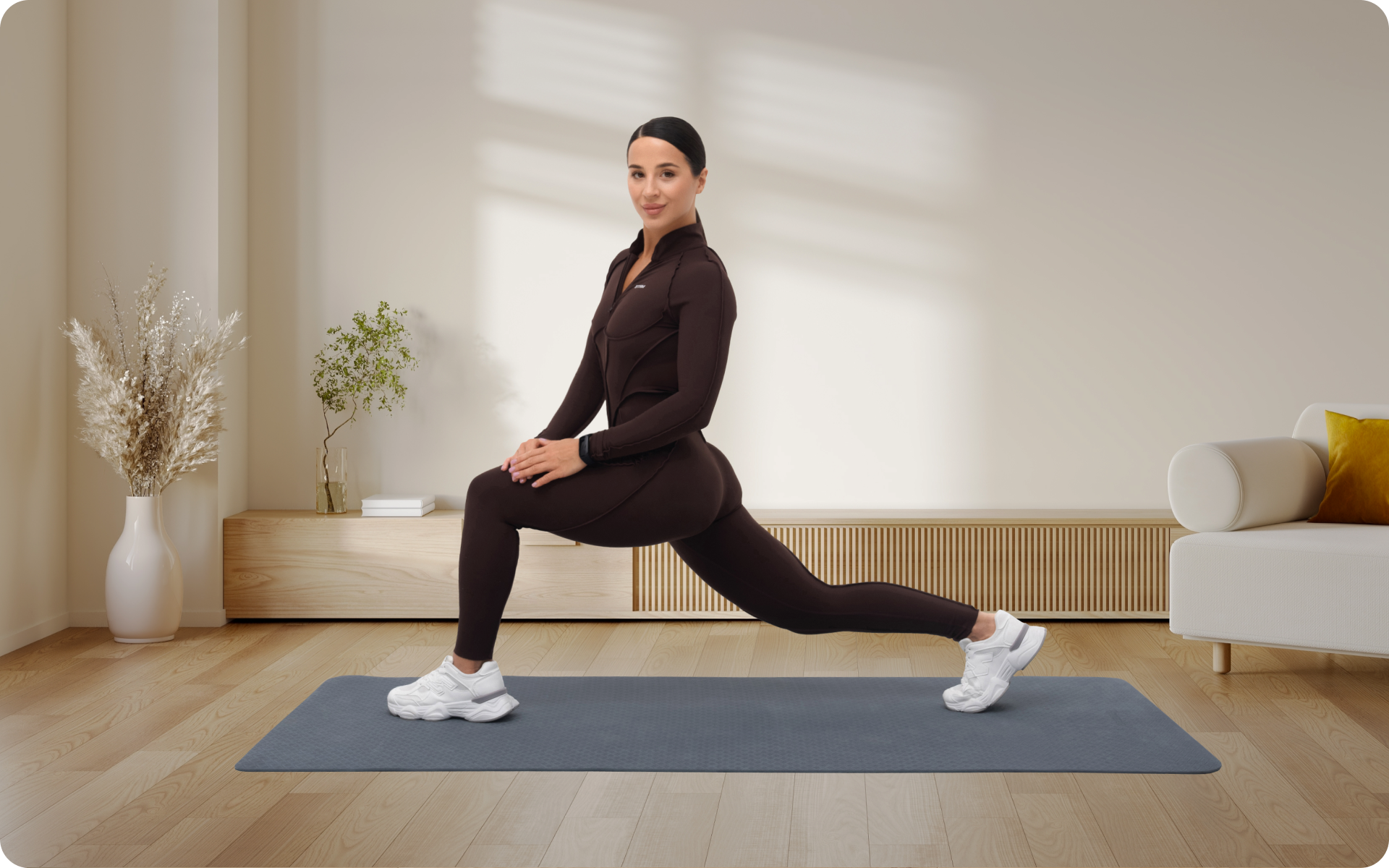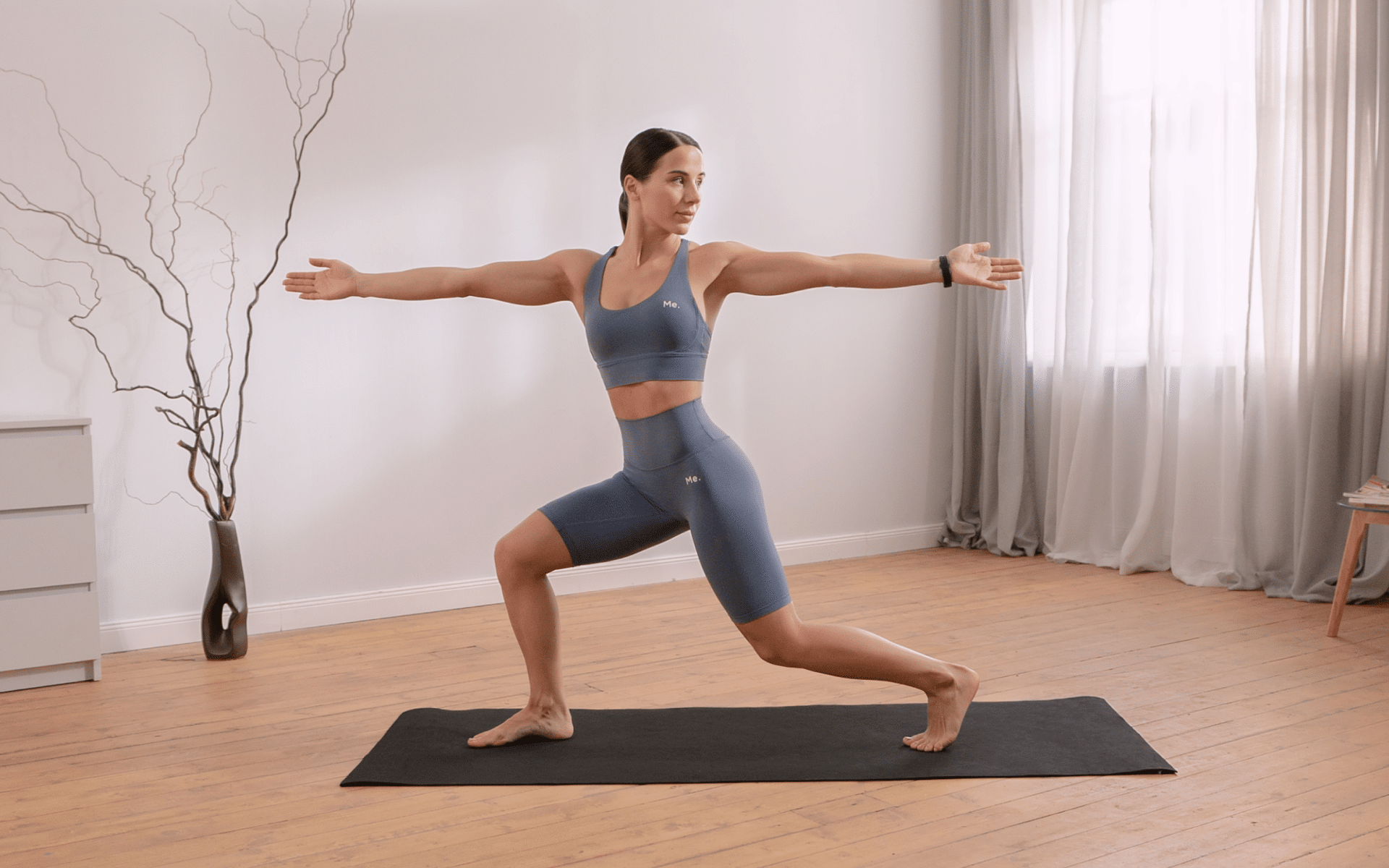Hitting the treadmill in the gym for thirty minutes, at a steady speed, is one way to get your cardio in and is certainly better than doing nothing at all. Plus, it has a host of health benefits in line with the American Heart Association’s recommendations (4). Similarly, a session of HIIT (High-Intensity Interval Training) can also get your heart rate up and provide a variety of health benefits (7). While both are good workouts, it can get tricky when you’re structuring a routine and trying to decide which one you should be prioritizing. What is the difference between HIIT and Cardio? And is there one workout that is more effective than the other? Let’s dive into the nuances of both to figure out which one is best for your desired fitness goals.
Get your personalized
meal plan!
What Counts As A Steady State Cardio?
The name suggests an important quality that sets apart Cardio from HIIT. Steady-state cardio is exactly that — steady and consistent, but not necessarily slow; it should be at a pace you can sustain for a while without becoming overly fatigued.
Examples of steady-state cardio include jogging, running, cycling, swimming, rowing, and brisk walking. All of these activities involve the large muscles of the body working at a consistent rate for an extended period of time, typically 20-45 minutes.
What Can Steady State Cardio Do For You?
No-frills, steady-state cardio is great for several reasons:
Builds An Efficient Aerobic System
Many people don’t realize just how dependent the human body is on aerobic energy production (burning fat and carbohydrates for fuel). Everyday activities, from walking up the stairs to carrying groceries to simply staying awake, all require an efficient aerobic system (1).
Digestion, breathing, sleeping, and hormone regulation are all processes that rely on a well-functioning aerobic system.
Regular, steady cardio helps build this engine in a way that HIIT cannot. While you’re trudging away at the treadmill, or along the street, there’s a process going on in your body that’s improving the way it uses oxygen — specifically, its ability to absorb and utilize oxygen more efficiently. Over time, this process will make it easier for you to do everyday activities, and even allows you to perform higher-level aerobic tasks like running a marathon with more ease.
Improves Cardiovascular Health
Continuous steady-state cardio is one of the most effective ways to improve your cardiovascular health. Studies show that even as little as 30 minutes of moderate-intensity exercise per day can help reduce risk factors for heart disease, including lowering cholesterol levels and reducing blood pressure.
Furthermore, the American Heart Association recommends at least 150 minutes of moderate aerobic activity per week in order to maintain a healthy heart and be ready for emergencies (4).
Lowers Resting Heart Rate
A commonly overlooked measure of overall health is the resting heart rate (RHR). RHR is the number of times your heart beats per minute when you’re at rest, and a lower number typically indicates a better level of cardiovascular fitness (13). It also indicates a healthy parasympathetic nervous system, which is responsible for calming the body down after exercise.
When you’re exercising at a lower intensity, the left ventricle of your heart is able to fill completely, and then relax more fully — this is known as diastolic filling. Improved diastolic filling leads to an improved stroke volume, which in turn lowers the resting heart rate and makes it easier for your body to respond during times of stress (10).
Read More: HIIT vs LISS: Which One Is Right For You?
De-Stresses Your Body And Mind
If you’re like most people who are always on the go, with a jam-packed schedule, then regular cardio can be a great way to decompress. Physically, the increased blood flow to your muscles helps release tension that can build up in your body over time.
Psychologically, a regular cardio routine helps reduce the stress hormone cortisol, which has been linked to weight gain and a host of other health issues (11).
In addition, research suggests that regular cardio can help improve mood, decrease anxiety, and can even help to reduce symptoms of depression. If you’re feeling overwhelmed, strapping on your running shoes and taking a long jog can be an effective way to help clear your head and refocus.
Improves Bone And Joint Health
Critics of steady-state cardio often point to the repetitive motions associated with it as a potential source of joint and muscle pain.
People at a healthy weight moderate, low-intensity cardio can actually improve your bone and joint health over time (5).
This is because steady-state cardio helps to increase blood flow to the bones, which in turn stimulates cells that are responsible for bone growth and regeneration. Furthermore, lower intensity exercise reduces the amount of stress placed on your joints and muscles, reducing the risk of injuries.
Finally, regular aerobic activity has been linked to improved balance and stability because it helps to strengthen the deep muscles around your joints.
The key here is to moderate your exercise frequency— too much exercise can quickly lead to exhaustion and injuries, while too little won’t do your body any favors either. Finding the right balance is key. With the right steady-state cardio routine, you can reap all of the health benefits without overworking your body.
BetterMe app will kick you out of the mental funk, shake off your extra weight, rid you off your energy-zapping habits, and help you sculpt the body of your dreams. Intrigued? Hurry up and change your life for the better!
Why You Might Want To Skip Steady-State Cardio
With its benefits, there are still some instances when steady-state cardio might not be the best choice.
Neglects Some Aspects Of Fitness
Critics of steady-state cardio argue that it doesn’t do enough to improve overall fitness, since it doesn’t build muscle or increase explosive power. This is true in a sense since steady-state cardio does not focus on these aspects of fitness. Beyond the basic health benefits of regular aerobic activity, most people will want to incorporate other forms of exercise into their routine.
Not Ideal For Weight Loss
Sure, any movement that increases your calorie expenditure can help with weight loss, but steady-state cardio has limited efficacy in this regard. For one, it takes a long time to burn a meaningful number of calories — far longer than high-intensity interval training (HIIT) or weight lifting.
Furthermore, steady-state cardio will typically not do much to improve your metabolism, whereas HIIT has been shown to help boost metabolic rate (7). A more efficient metabolism guarantees that your body is better able to process food and burn fat.
Risky Of Repetitive Injuries
Finally, there is the risk of repetitive use injuries associated with steady-state cardio. As mentioned earlier, if you’re not careful then the constant high-impact motions can potentially lead to injuries over time. To reduce the likelihood of such an issue, it’s important to take regular rest days and incorporate strength training into your routine in order to build up the muscles around your joints.
What Counts As HIIT?
HIIT stands for High Intensity Interval Training, and its big claim to fame is that you can get the same amount of work done in less than half the time. HIIT workouts typically involve short bursts of full-body exercises that are set to a repeating cycle.
HIIT is often done in intervals of 20 seconds (or more) at near maximum effort (usually 80 to 95% of your maximum heart rate) followed by 10 seconds of rest or active recovery. The rest period is important for allowing your body to recover so you can give it your all when you start up again.
The work and recovery periods aren’t set in stone— they can be adjusted to fit different fitness levels, or even your own preferences. For example, if you are a beginner, you may want to start with 10 seconds of work and 20 seconds of recovery.
Originally designed for athletes to help them improve their performance, HIIT has become popular among people looking to get into shape quickly.
Read More: A Treadmill HIIT Workout That’s Simple And Effective
What Can HIIT Do For You?
In many ways, HIIT lives up to the hype. Research shows the following benefits of this type of training:
Effective For Weight Loss
When you’re trying to lose weight (or lose fat, which is essentially the same if not better), HIIT is one of the best strategies out there (6). That’s because it rapidly increases your heart rate and keeps it elevated for an extended period of time.This means you burn more calories in the same amount of time than with steady-state cardio.
Even better, HIIT has been shown to preserve muscle mass, which is often lost during other types of extensive exercise. Having more muscle mass helps to boost your metabolism and makes it easier to maintain a healthy weight. We can’t neglect the afterburn effect which is a post-workout period of high calorie burn that can last up to 48 after your HIIT session.
Improves Performance
HIIT has a knack for improving multiple areas of fitness, such as metabolic flexibility, power output and VO2 max (3). This makes it a great choice for athletes who want to improve their performance and break through plateaus.
Metabolic flexibility is the ability to switch quickly between different energy-producing pathways (9). An athlete who is metabolically flexible can go from a sprint to a jog without missing a beat, while one who lacks metabolic flexibility may take longer periods of time to switch gears.
Power output is the ability to generate a lot of force quickly, which is essential in sports like sprinting and jumping (8). Having a high power output can make all the difference when it comes to crossing the finish line first or jumping higher than your opponents.
VO2 max is a measure of an athlete’s aerobic capacity and represents the maximum amount of oxygen they can use during exercise (12). Having a high VO2 max can help you go faster and for longer periods of time. HIIT has been proven to significantly increase an athlete’s VO2 max, which can help them reach their peak performance.
Saves Time
Time is becoming an increasingly limited commodity, and HIIT helps you make the most of it. With just a few minutes of work per day, you can squeeze in an effective workout that doesn’t take up much of your time. That means you can get in and out of the gym more quickly and spend more time with friends, family or just relaxing.
Why You Might Want To Avoid HIIT
Although HIIT can be a great way to get fit quickly, it is not for everyone. It has some drawbacks, including:
Diminishes Aerobic Functioning
HIIT is primarily anaerobic exercise, meaning it does not require a lot of oxygen or involve sustained activity. This means that you may not be able to sustain high-intensity activity for long periods of time and you may not improve your aerobic capacity as much.
Continually practicing this exercise can leave you fast and strong, but lacking in aerobic endurance. If you’re an athlete who relies on their aerobic capacity, you may want to look for other forms of exercise. A high resting heart rate (of about 75-80 beats per minute) may be a sign that you need to take a break from HIIT.
Activates The Fight Or Flight Response
The human body is wired to respond quickly in emergencies, and HIIT can trigger this fight or flight response. The surge of adrenaline that comes with a HIIT workout can make it difficult to sleep, and over time may lead to exhaustion. Other symptoms of a parasympathetic system that is overworked could include irritability, muscle tension and headaches.
If you’re feeling constantly stressed or anxious, HIIT might make these feelings worse. Consider cutting back on HIIT and focusing on low-intensity exercise, such as yoga or walking, to give your body a chance to rest and recover.
Lean and toned up body isn’t just a far-fetched fantasy. Check out the BetterMe app and watch it propel your weight loss journey into high gear!
HIIT Cardio Vs Steady State Cardio, Which Is Better?
Given the pros and cons of HIIT vs cardio discussed above, it’s difficult to say which type of exercise is ‘better’. Ultimately, the type of exercise you choose depends on your goals, fitness levels, and preferences. Below are some scenarios where one type of exercise may be preferable over the other:
If You’re A Beginner – Choose Steady State Cardio
Aerobic fitness is the foundation of so many different sports and activities, so if you’re new to exercise it can be beneficial to start with a lower intensity form of cardio. Steady state cardio can help you build a strong base of cardiovascular fitness, which will make higher intensity exercise easier in the future.
If You’re Sport Specific With A High Resting Heart Rate – Choose Steady State Cardio
Experienced athletes may want to focus on steady state cardio if they have a high resting heart rate and are training for a specific sport. This type of exercise can help you develop your aerobic capacity, allowing you to sustain higher intensity activity for longer periods of time.
How to determine your heart rate? A simple way to measure your heart rate is to take your pulse. Place two fingers (not your thumb) on either side of your neck and count the number of beats you feel in one minute. The number you get is your heart rate. Anything above 65 warrants a break from HIIT.
If You’re Sports Specific With A Low Resting Heart Rate – Choose HIIT
If you have a low resting heart rate and are looking to improve sports performance, HIIT may be the way to go. This type of exercise can help you develop speed, power and agility, which are all important for athletes. Not to mention, HIIT can be completed in a shorter amount of time than steady state cardio.
Periodize Your Workouts To Get The Benefits Of Both
If you’re looking to get the best of both worlds, consider periodizing your workout routine. This means alternating periods of HIIT with periods of steady-state cardio, allowing you to build both strength and endurance. Other advantages of periodizing your workouts include:
- Break fitness plateaus – your body adapts to the same type of exercise over time, so periodizing your workouts can help you break through those plateaus
- Avoid burnout – alternating HIIT and steady-state cardio can help you stay motivated and avoid burnout
- Deliver lasting results – periodizing your workouts can lead to more sustainable results in the long run
- Reduce the risk of injury – by mixing up your routine, you can reduce the risk of overuse injuries
How To Periodize Your Workouts
Periodizing your workouts doesn’t have to be complicated. In fact, it can be as simple as:
- Switching workouts based on your resting heart rate – if you have a high resting heart rate, focus on steady state cardio. Once you’ve built up your aerobic capacity, you can switch to HIIT.
- Alternating workouts based on your goals – say you want to lean out for a wedding or improve your sports performance. You can alternate HIIT and steady-state cardio based on what you’re trying to accomplish.
- Alternating workouts based on your sports season – if you’re an athlete, it may make sense to focus on HIIT during the off-season and steady state cardio for active recovery during the season.
- Alternating workouts every 2-3 months – if you’re just looking for a change in routine, simply switch up your workouts every couple of months to avoid hitting a plateau.
Conclusion
The type of exercise you choose depends on your goals, fitness levels, and preferences. Steady state cardio is particularly beneficial for gaining aerobic fitness and improving sports performance. HIIT can help you build strength, speed, and power. Periodizing your workouts is a great way to get the benefits of both. So, experiment with different types of exercise and determine which is best for you.
DISCLAIMER:
This article is intended for general informational purposes only and does not serve to address individual circumstances. It is not a substitute for professional advice or help and should not be relied on for making any kind of decision-making. Any action taken as a direct or indirect result of the information in this article is entirely at your own risk and is your sole responsibility.
BetterMe, its content staff, and its medical advisors accept no responsibility for inaccuracies, errors, misstatements, inconsistencies, or omissions and specifically disclaim any liability, loss or risk, personal, professional or otherwise, which may be incurred as a consequence, directly or indirectly, of the use and/or application of any content.
You should always seek the advice of your physician or other qualified health provider with any questions you may have regarding a medical condition or your specific situation. Never disregard professional medical advice or delay seeking it because of BetterMe content. If you suspect or think you may have a medical emergency, call your doctor.
SOURCES:
- Aerobic exercise: Top 10 reasons to get physical (2022, mayoclinic.org)
- Aerobic Exercise Combination Intervention to Improve Physical Performance Among the Elderly: A Systematic Review (2021, nih.gov)
- Aerobic high-intensity intervals improve VO2max more than moderate training (2007, nih.gov)
- American Heart Association Recommendations for Physical Activity in Adults and Kids (2018, heart.org)
- Effect of Moderate Aerobic Training on Bone Metabolism Indices among Adult Humans (2014, nih.gov)
- High-Intensity Intermittent Exercise and Fat Loss (2011, nih.gov)
- High-intensity interval training for health benefits and care of cardiac diseases – The key to an efficient exercise protocol (2019, nih.gov)
- Human power output and muscle fatigue (1994, nih.gov)
- Metabolic flexibility (2004, nih.gov)
- Physiology, Stroke Volume (2022, nih.gov)
- Stress and Obesity: Are There More Susceptible Individuals? (2018, nih.gov)
- VO2max: what do we know, and what do we still need to know? (2008, nih.gov)
- What’s a normal resting heart rate? (2022, nih.gov)
